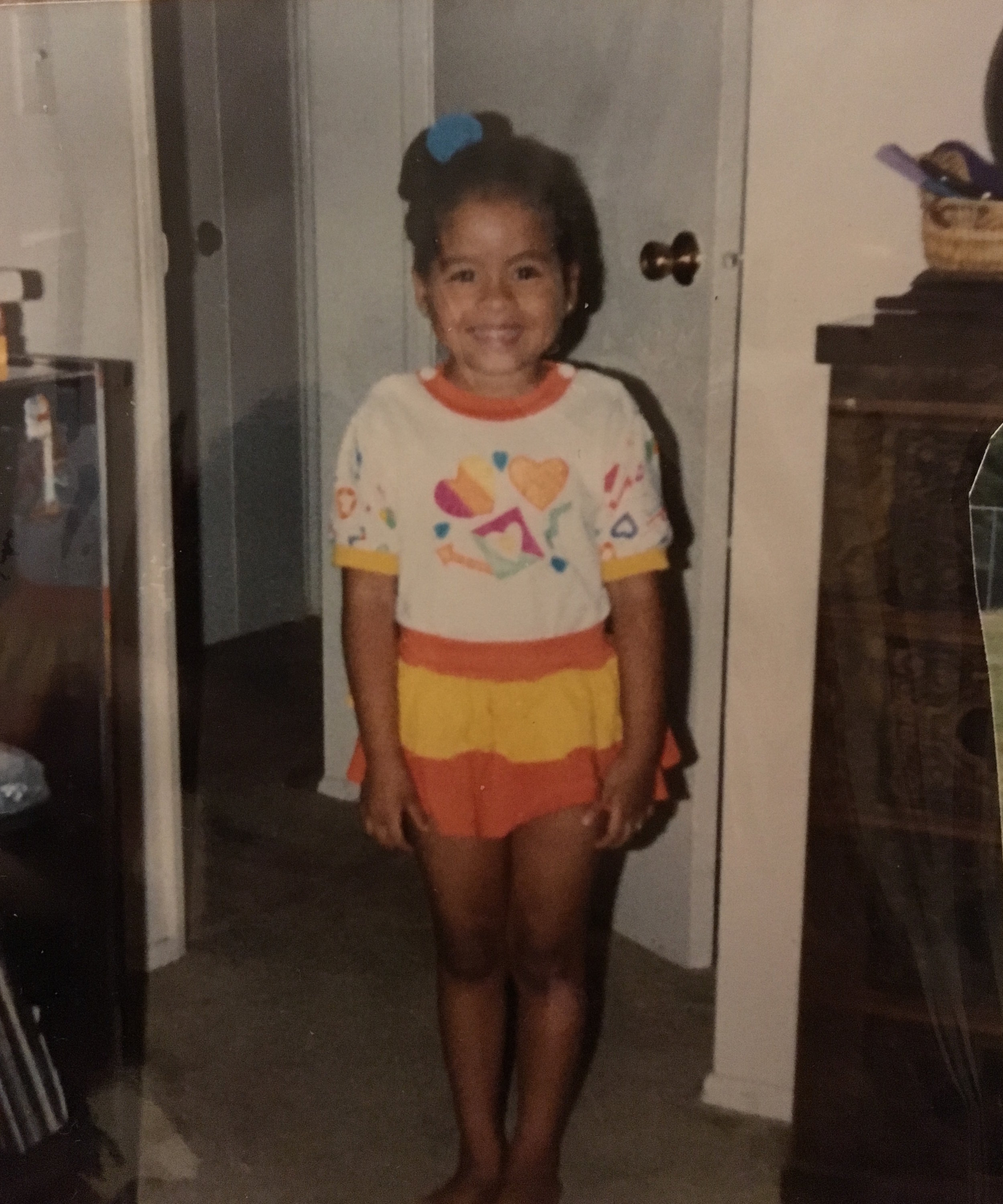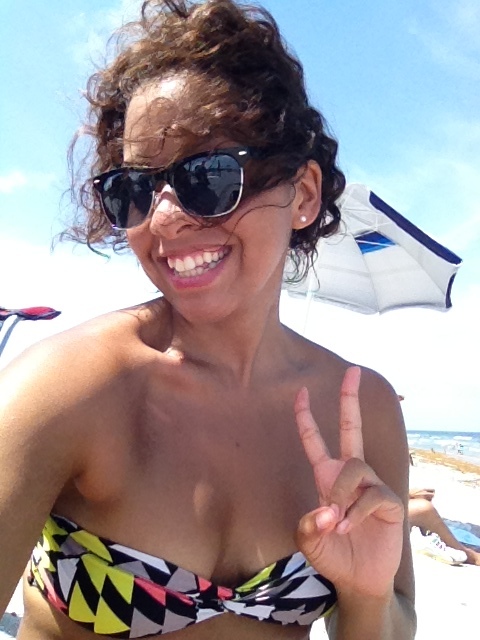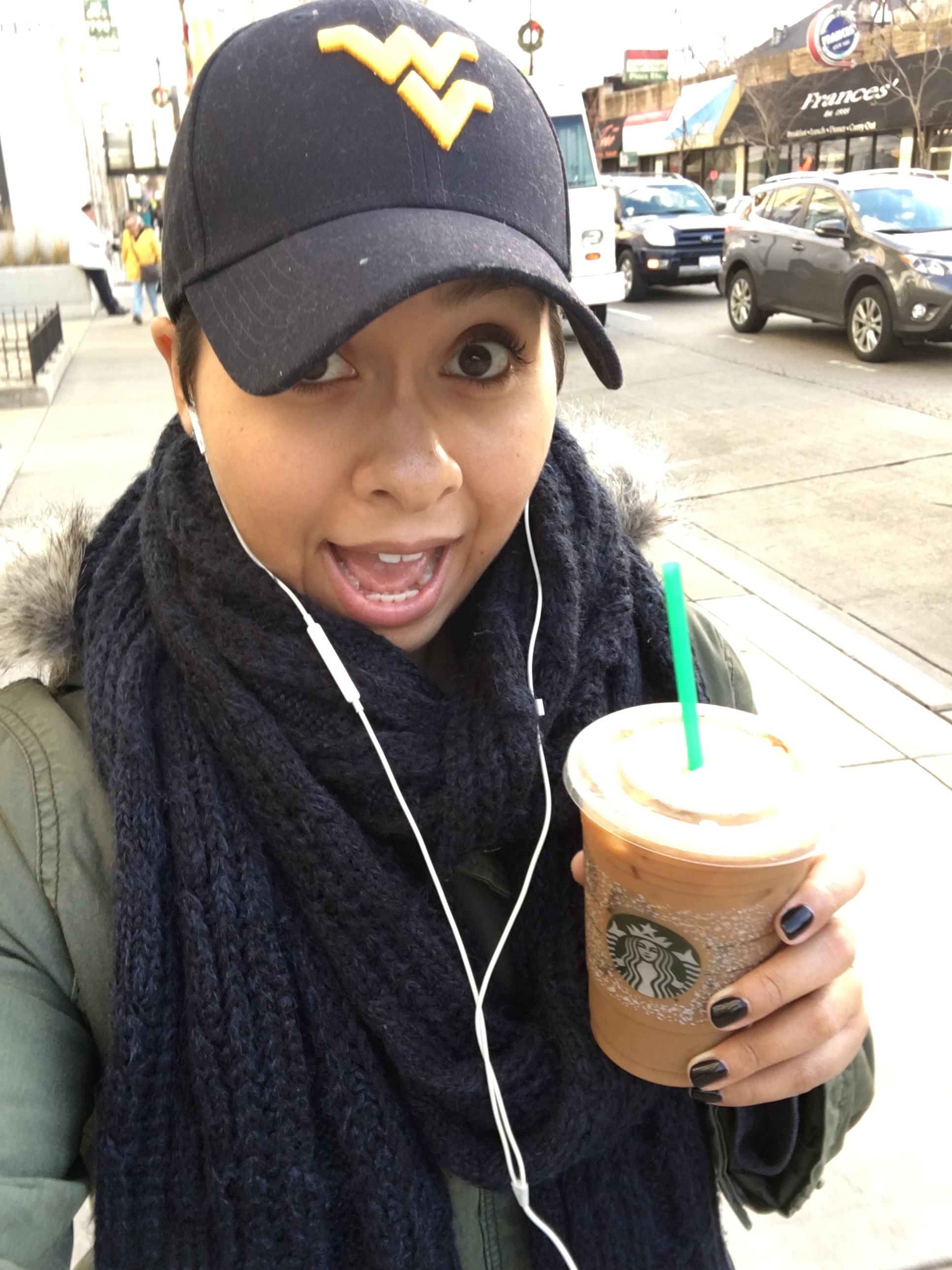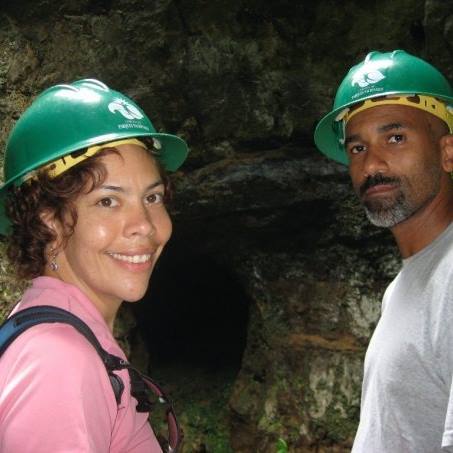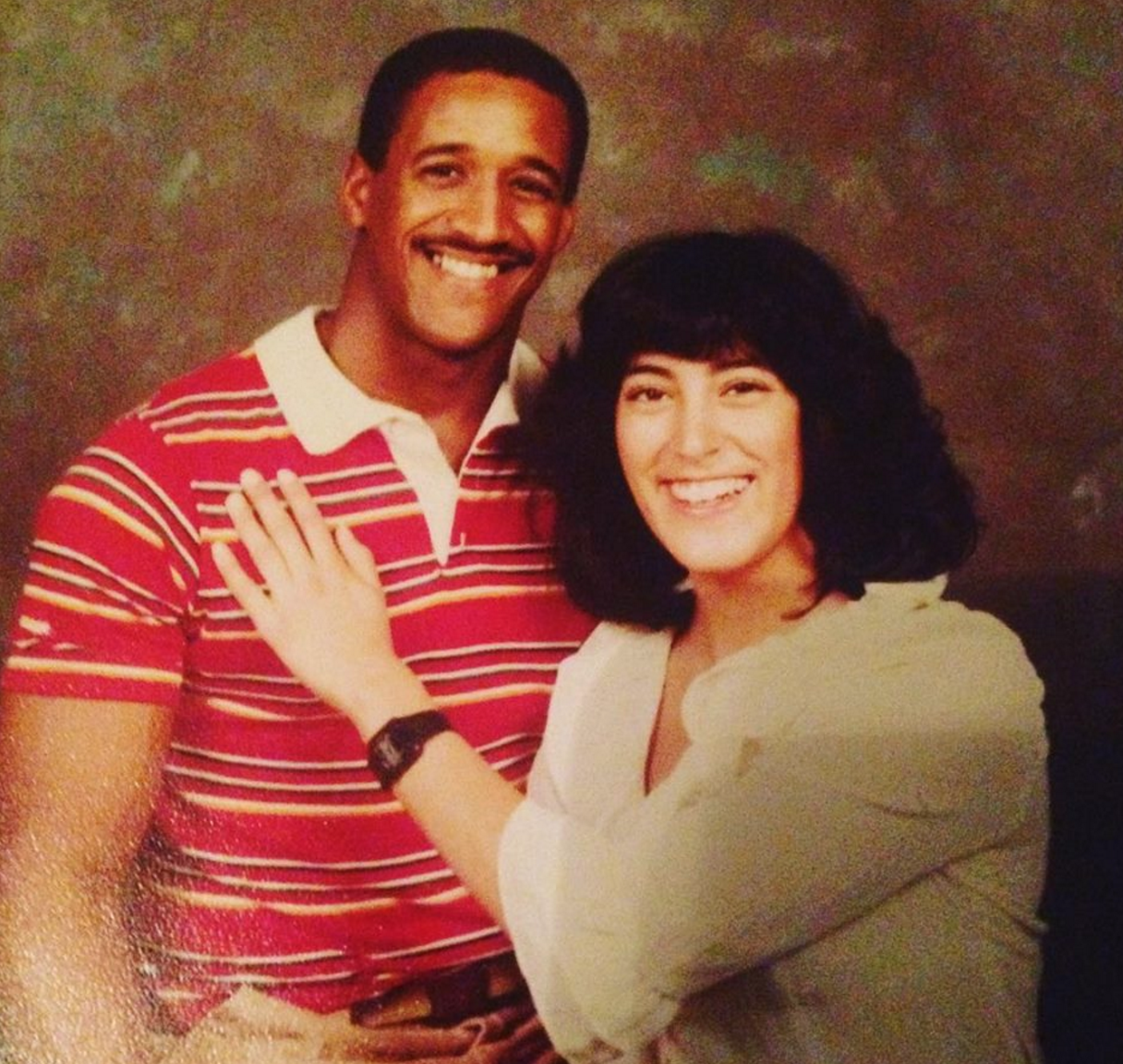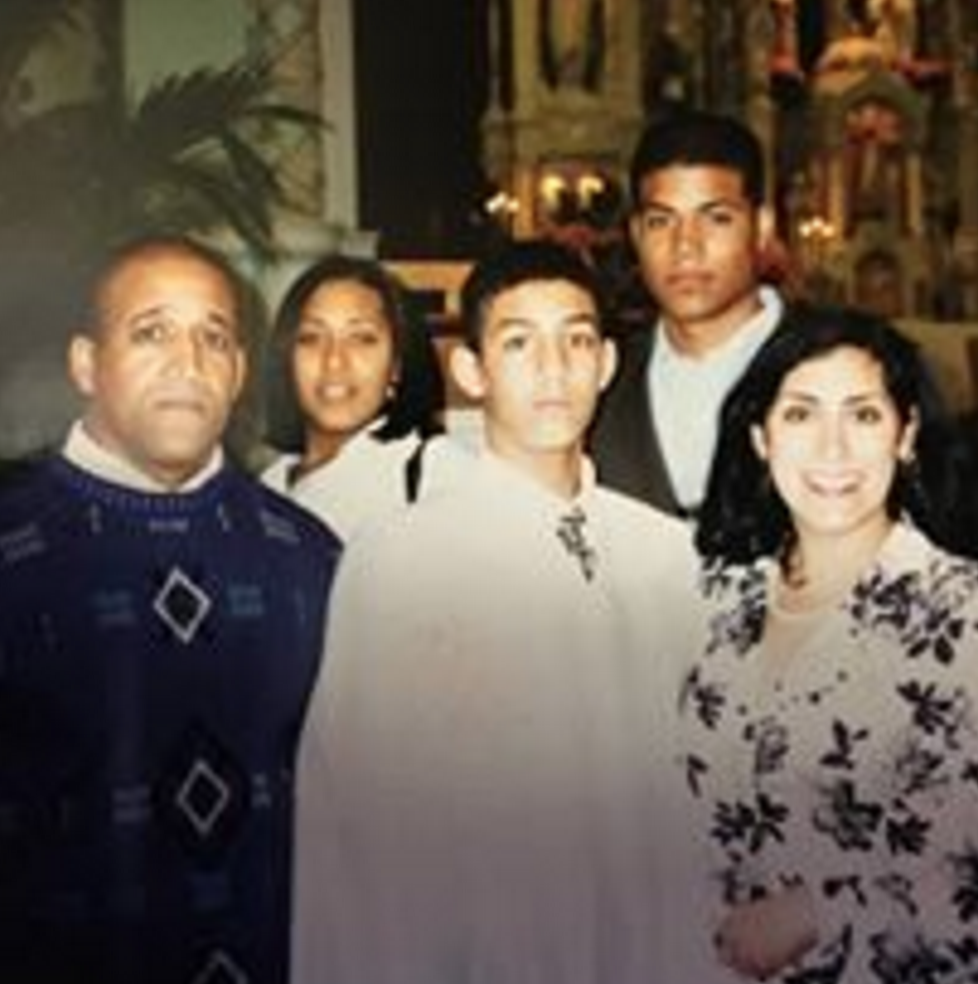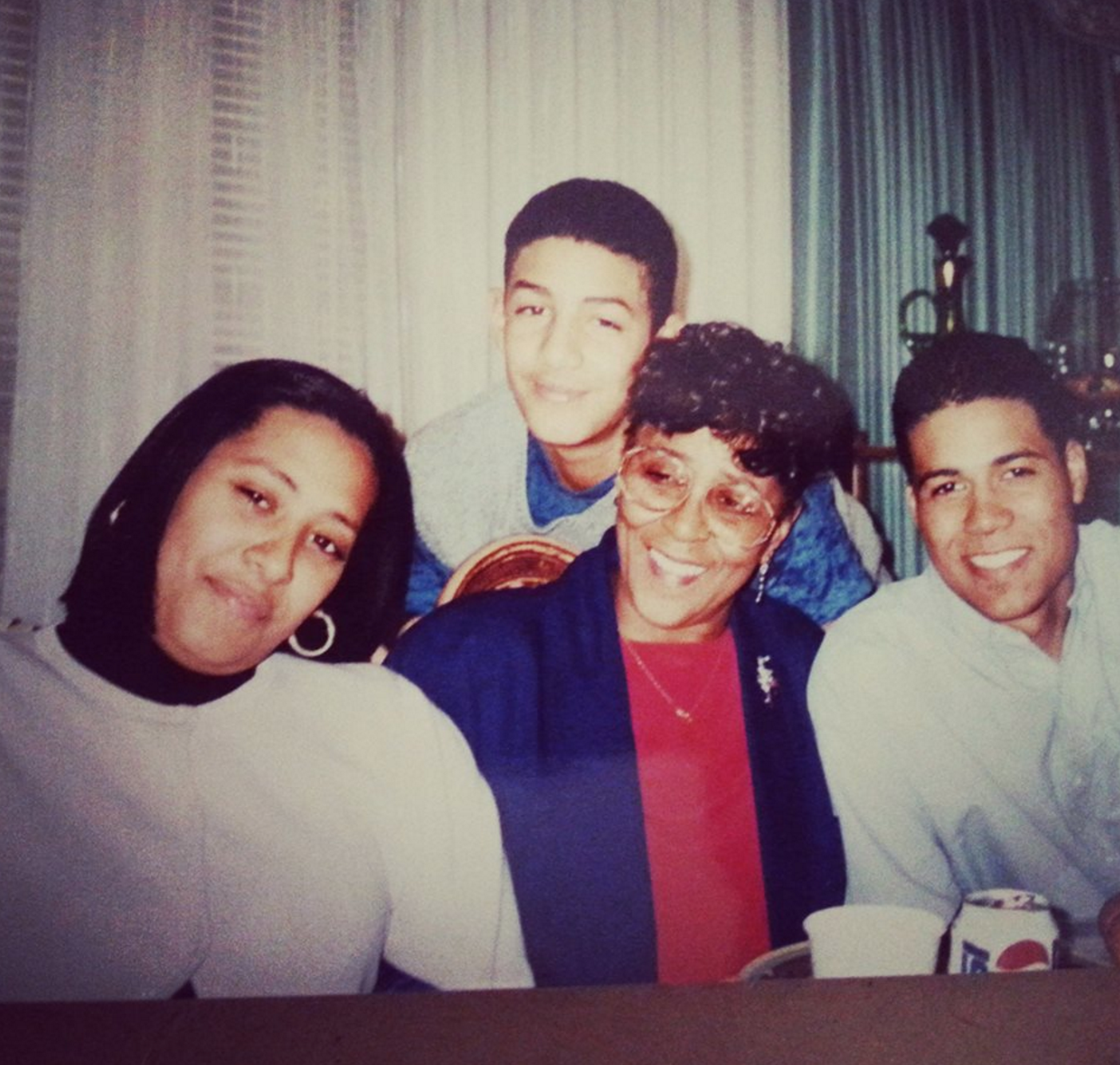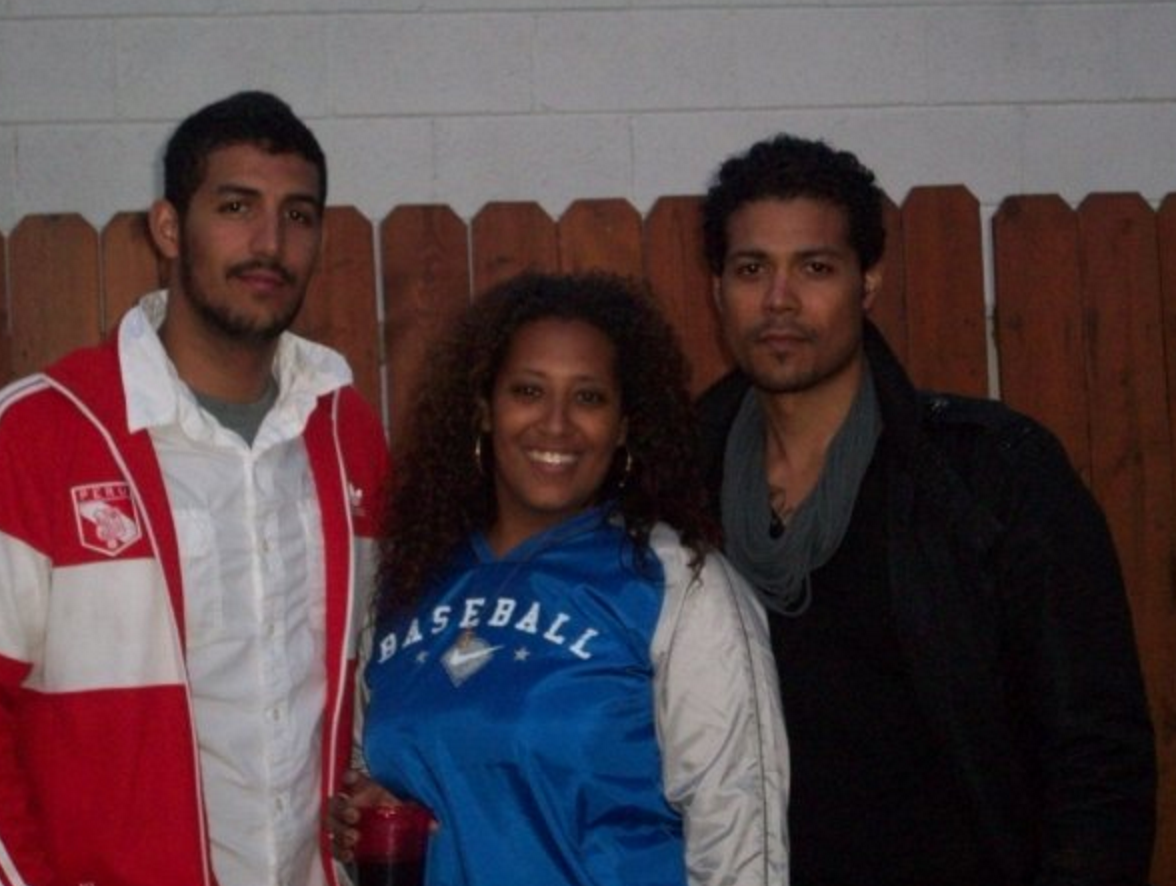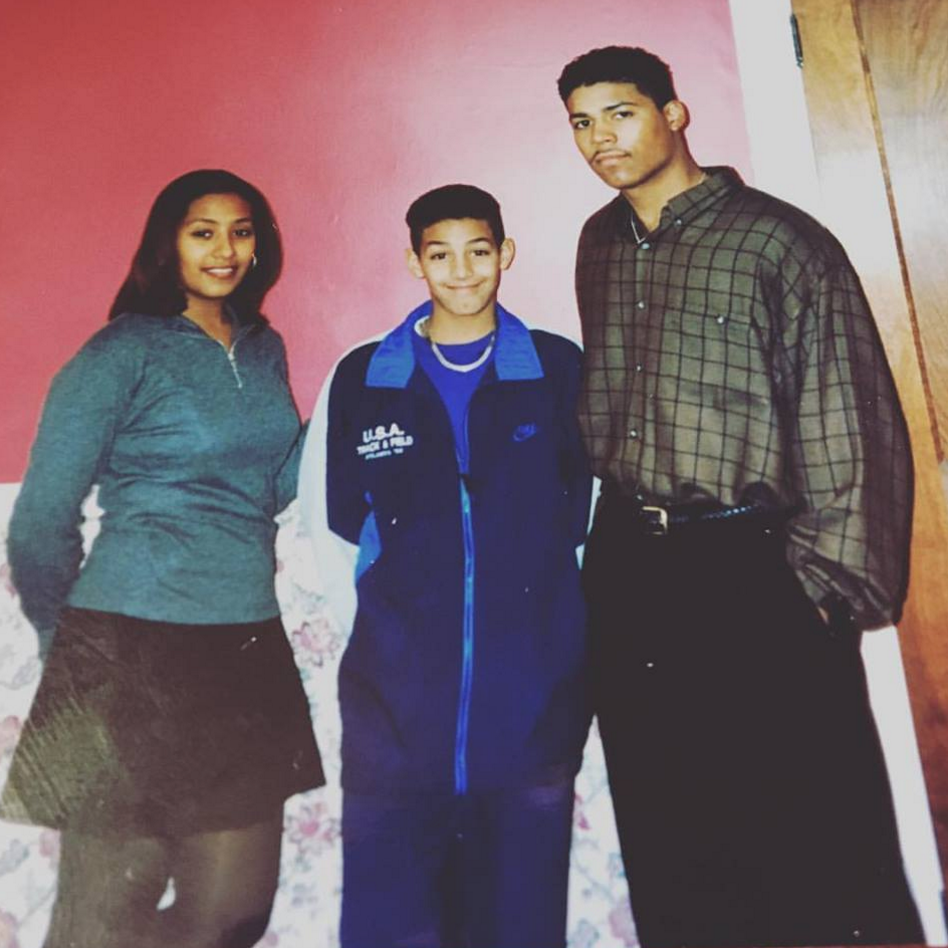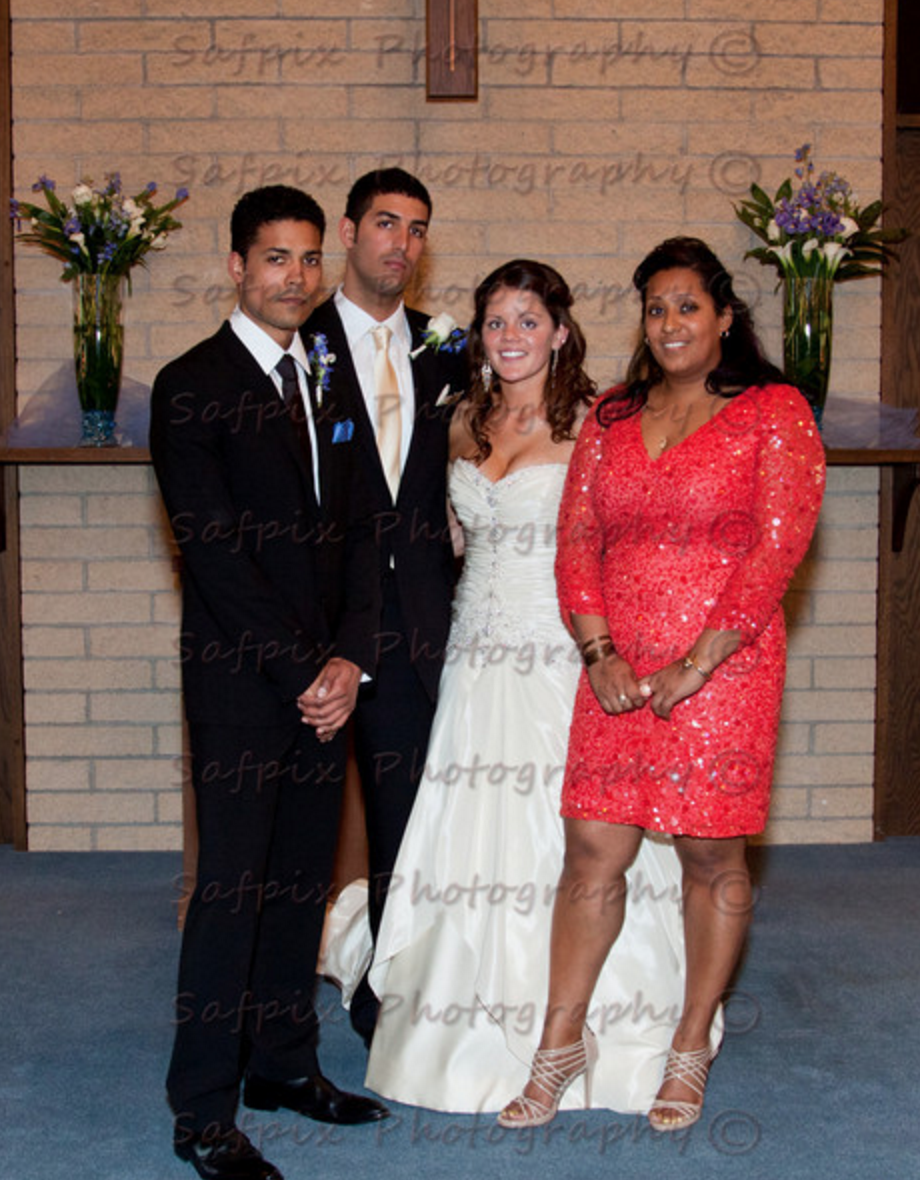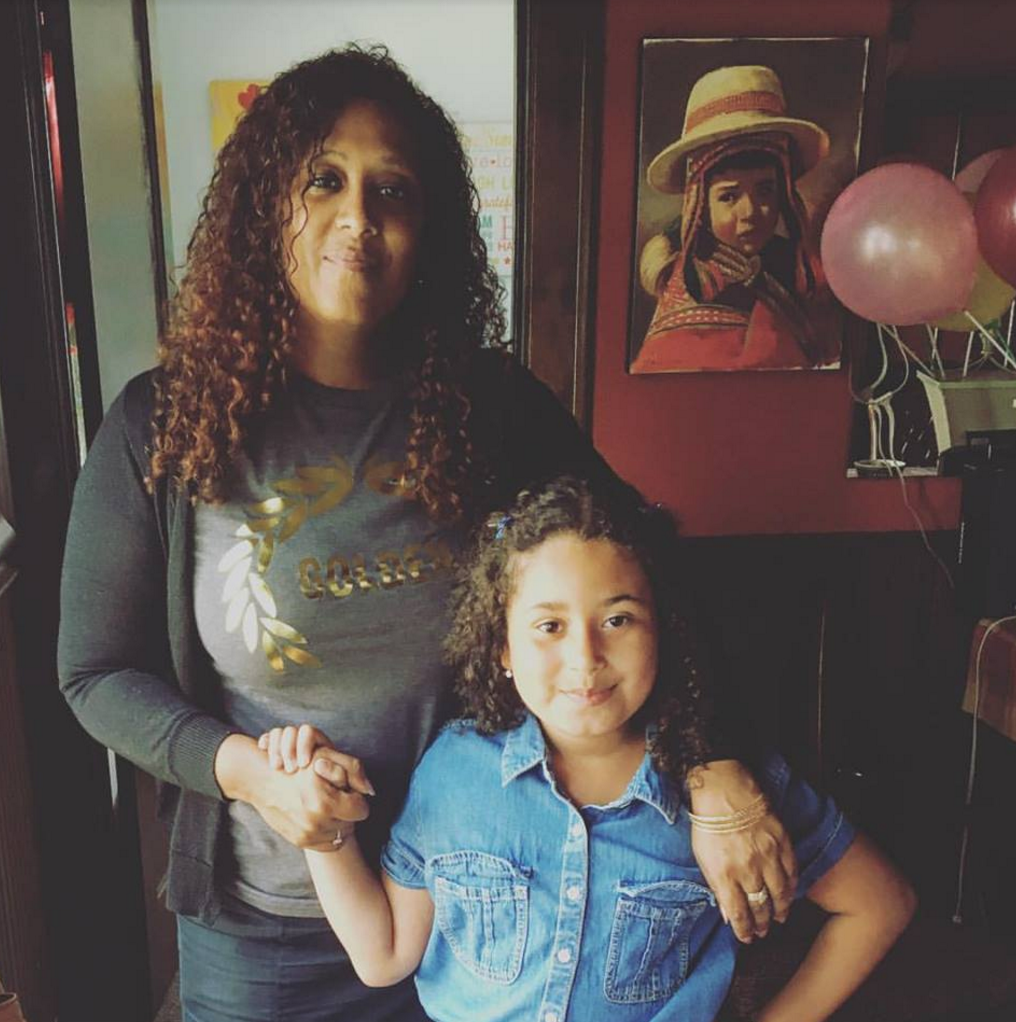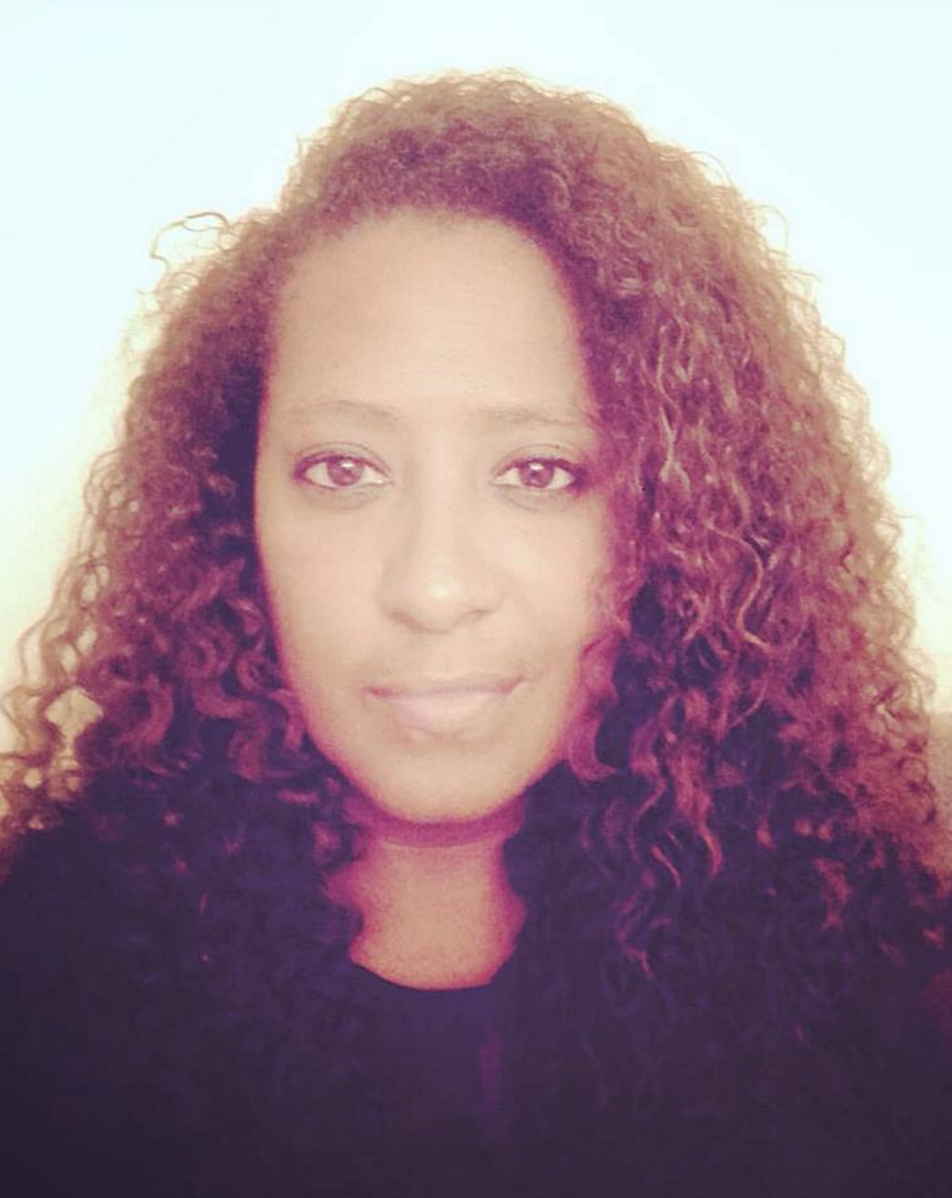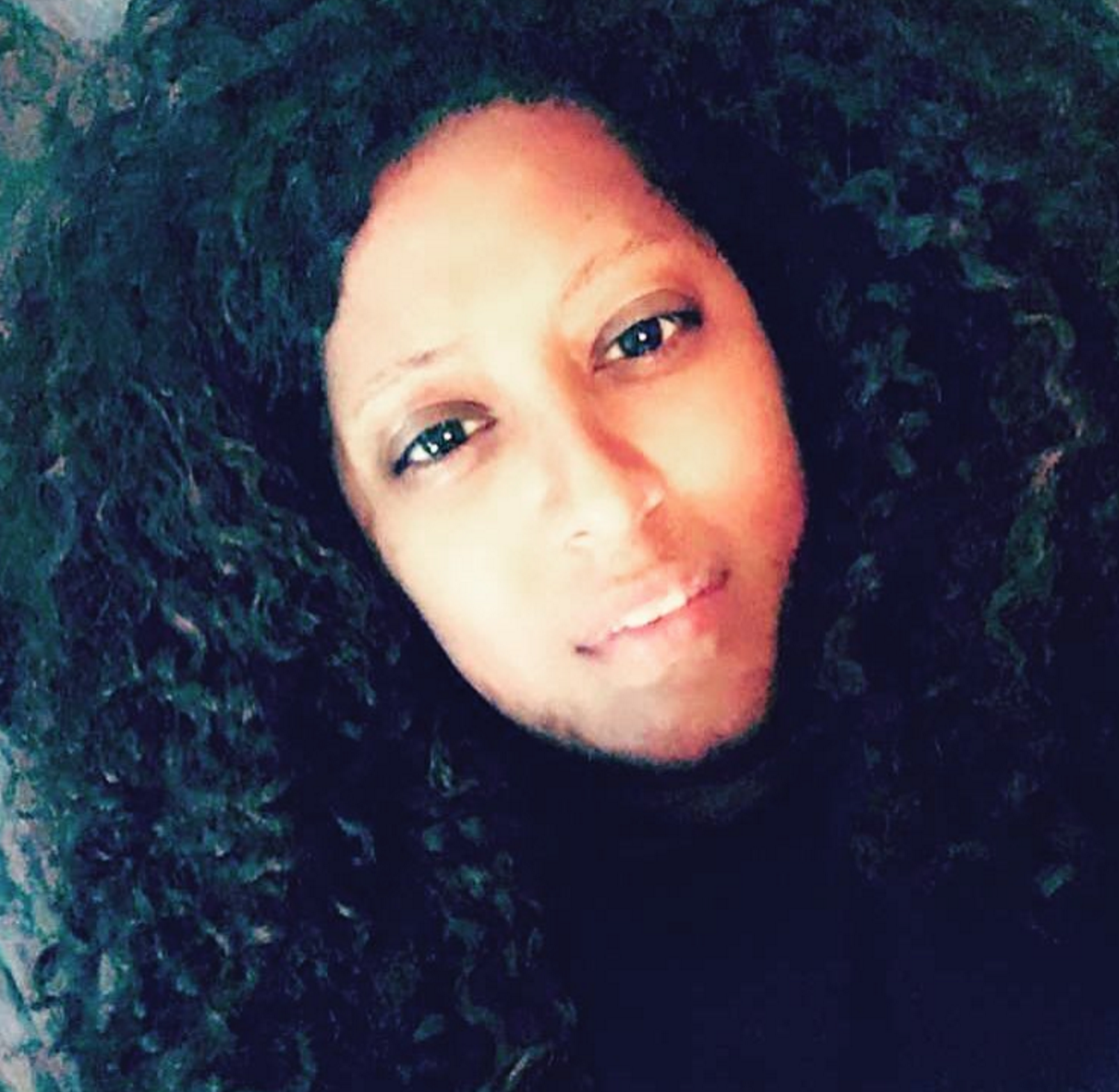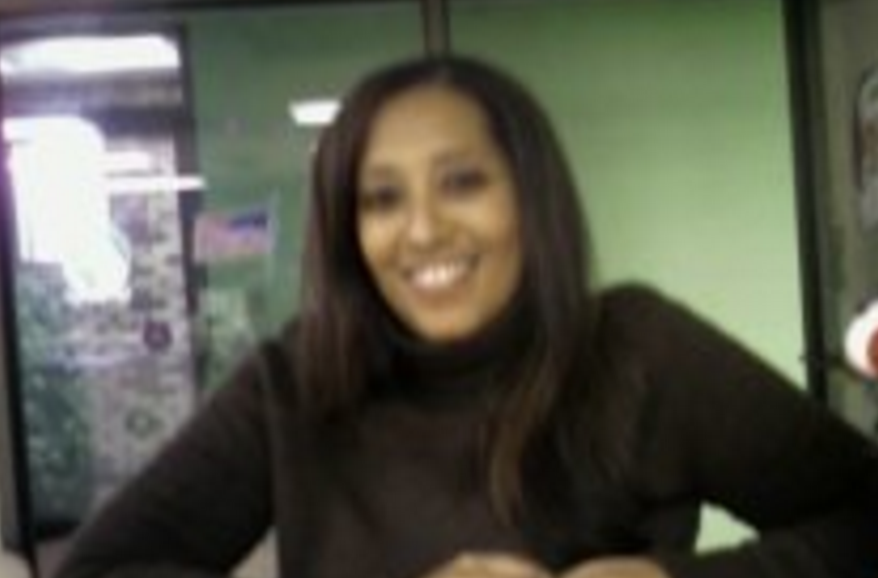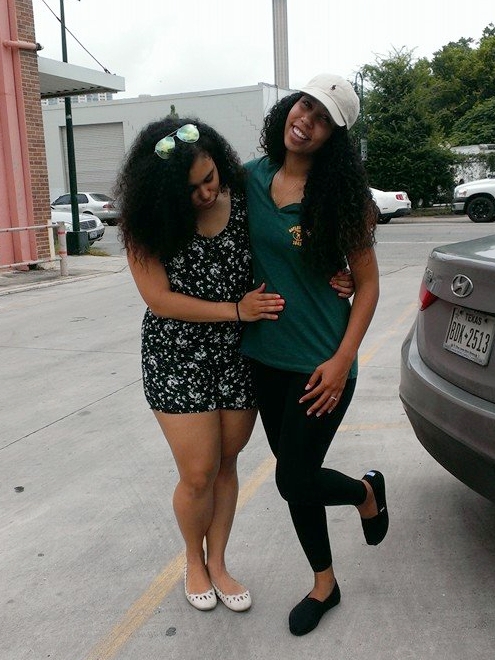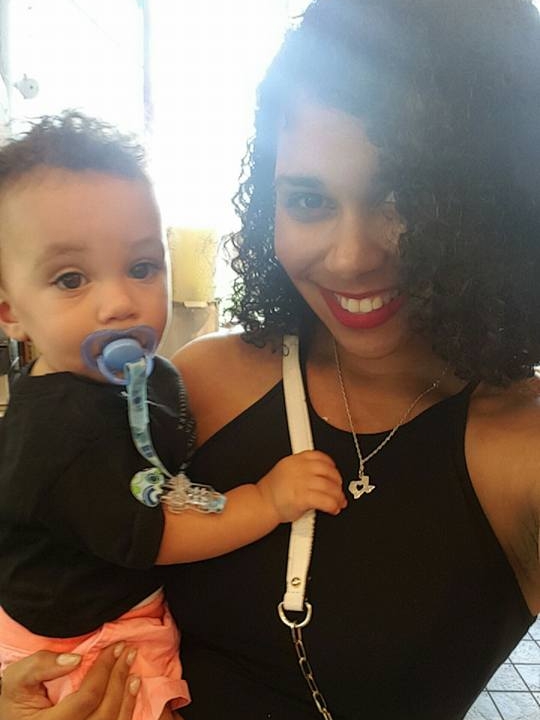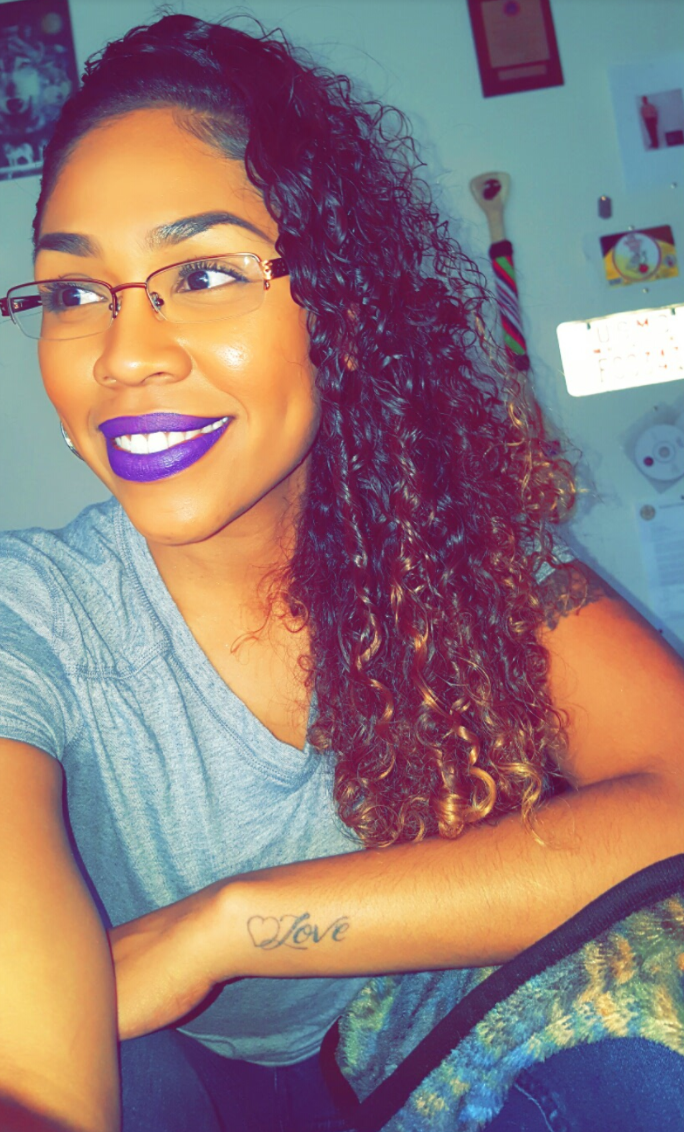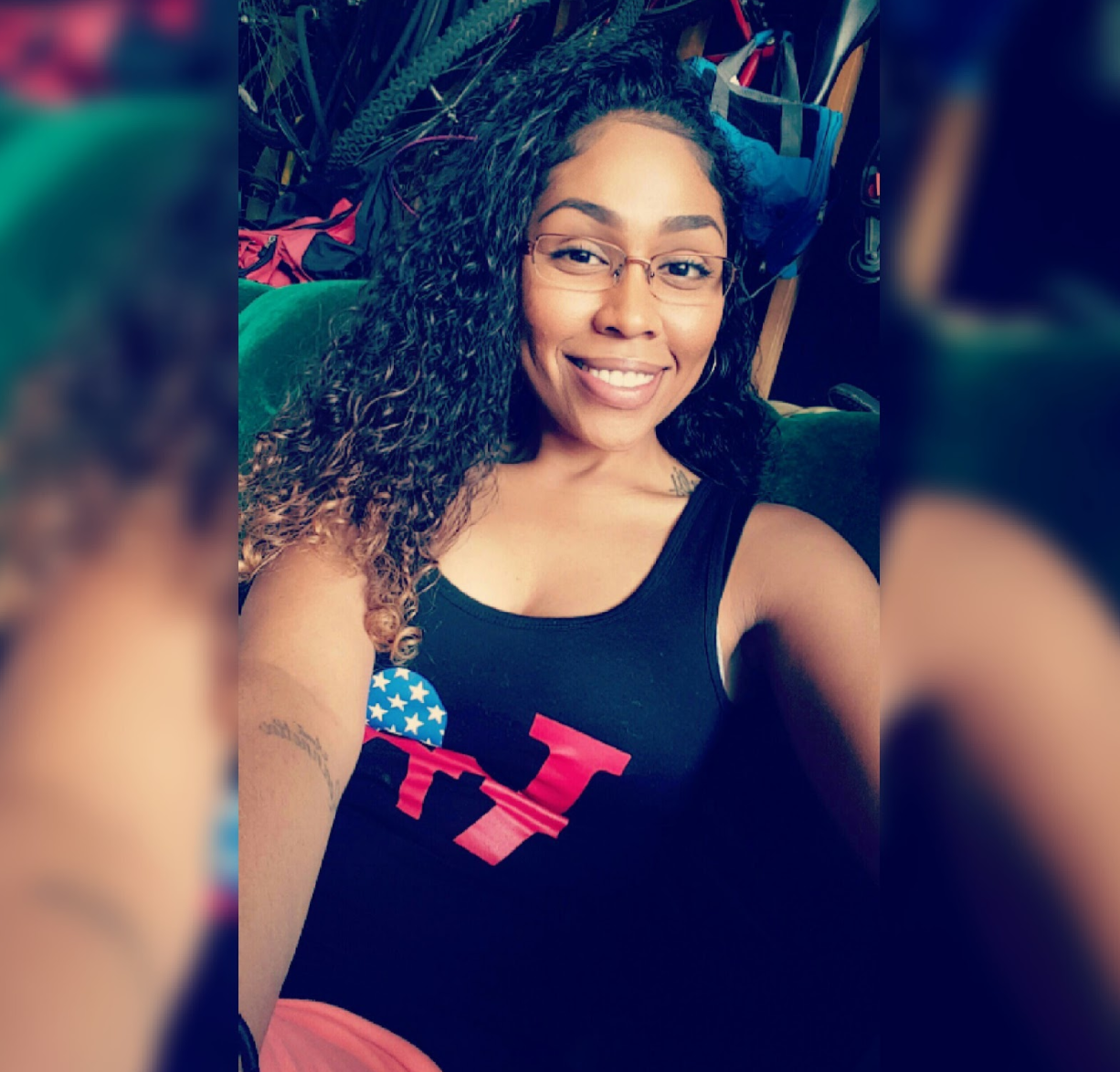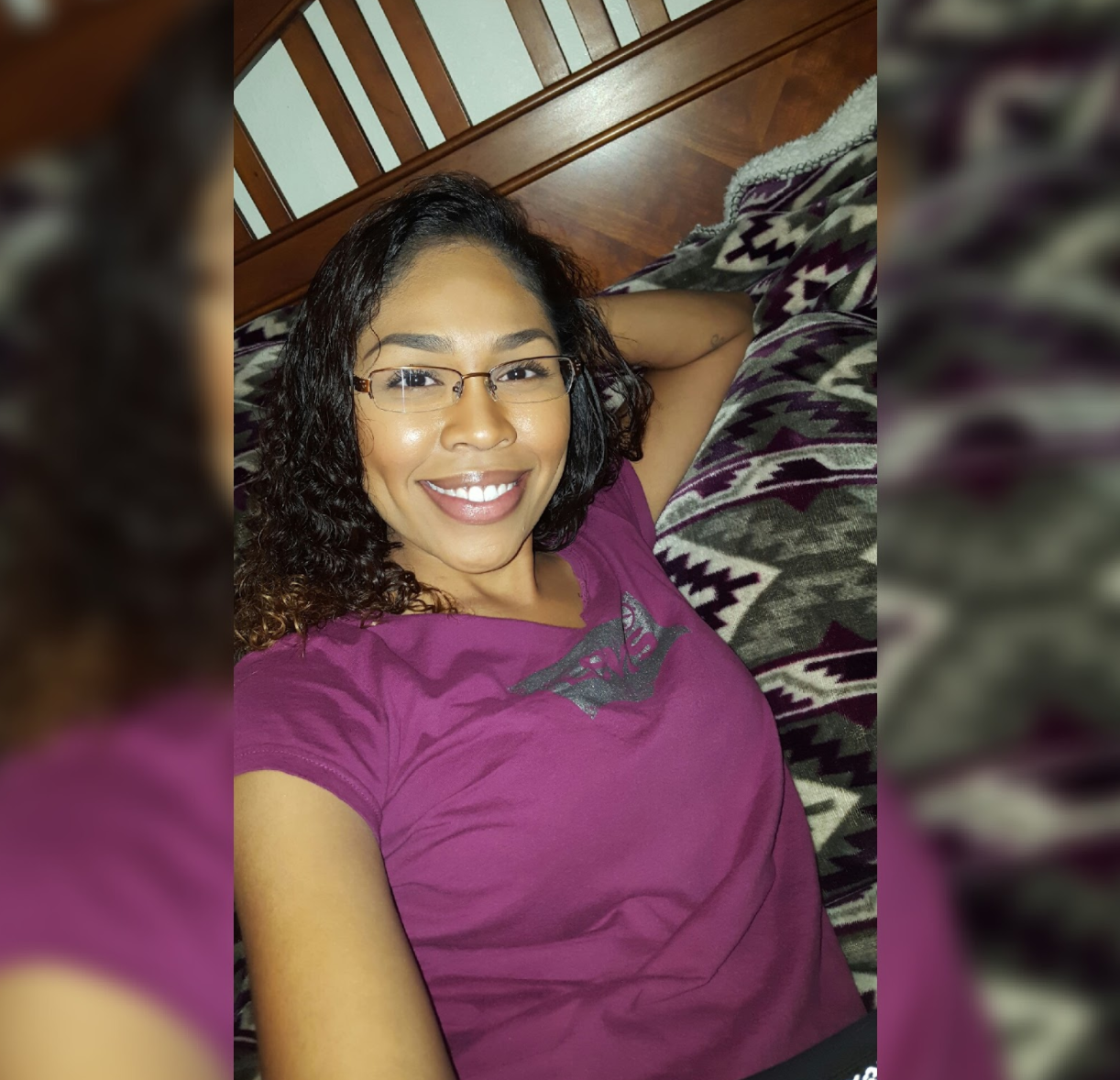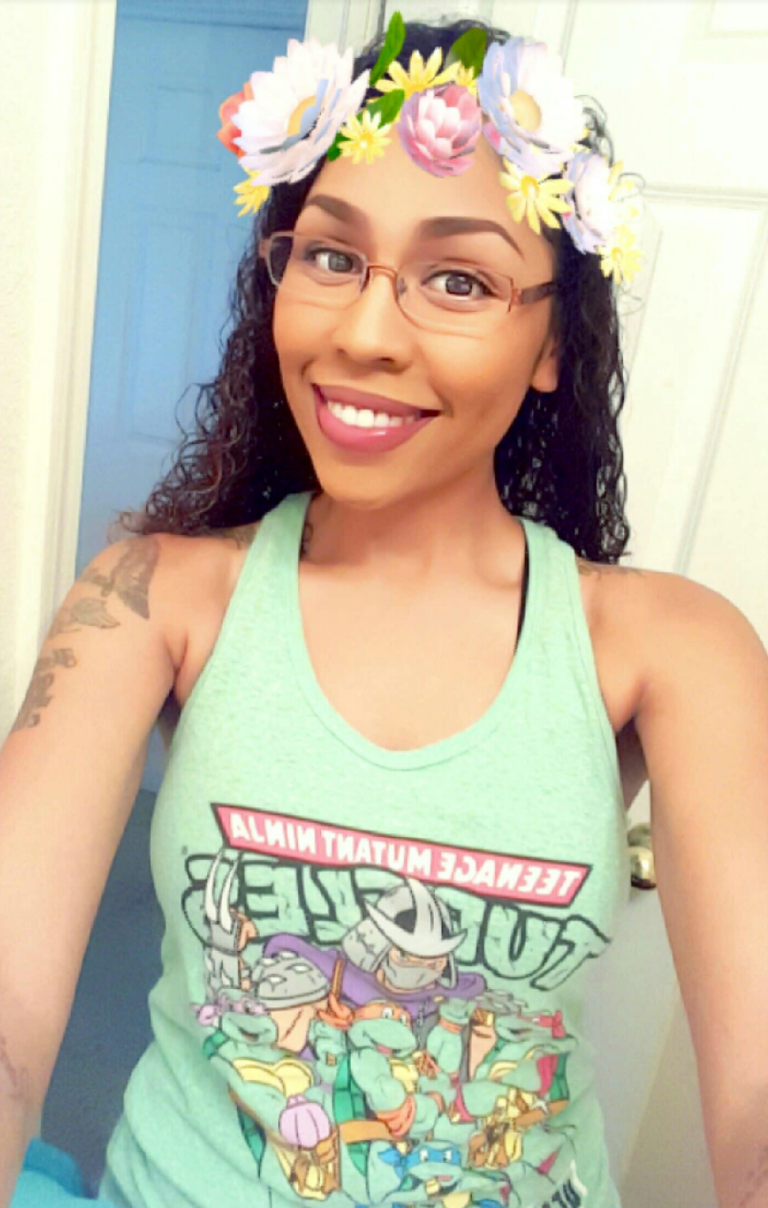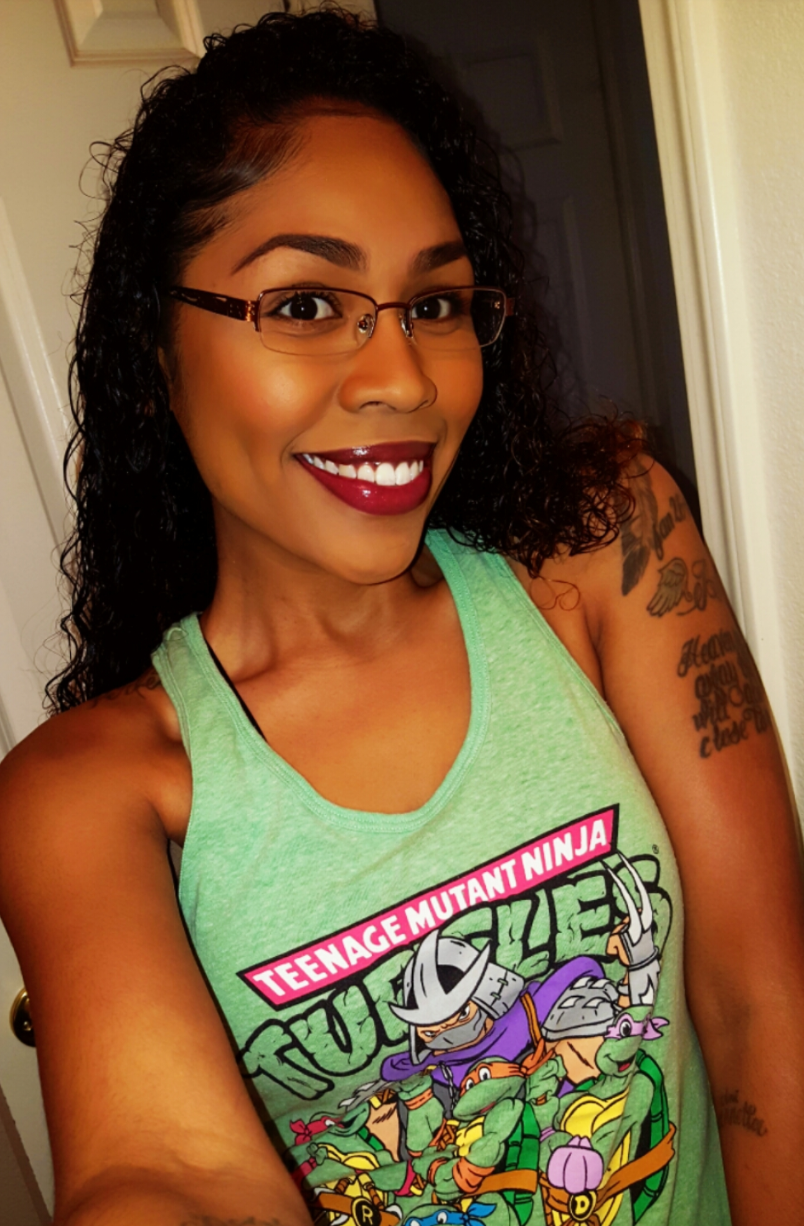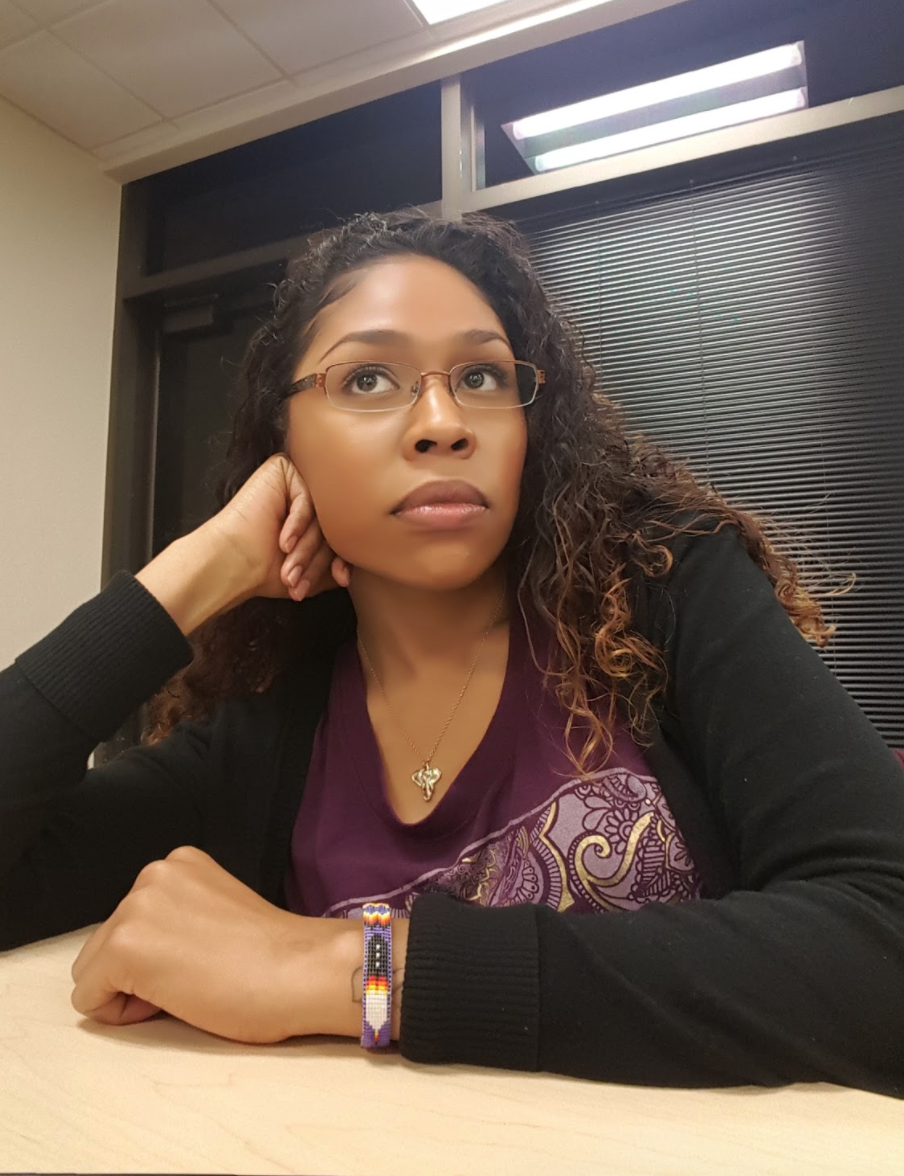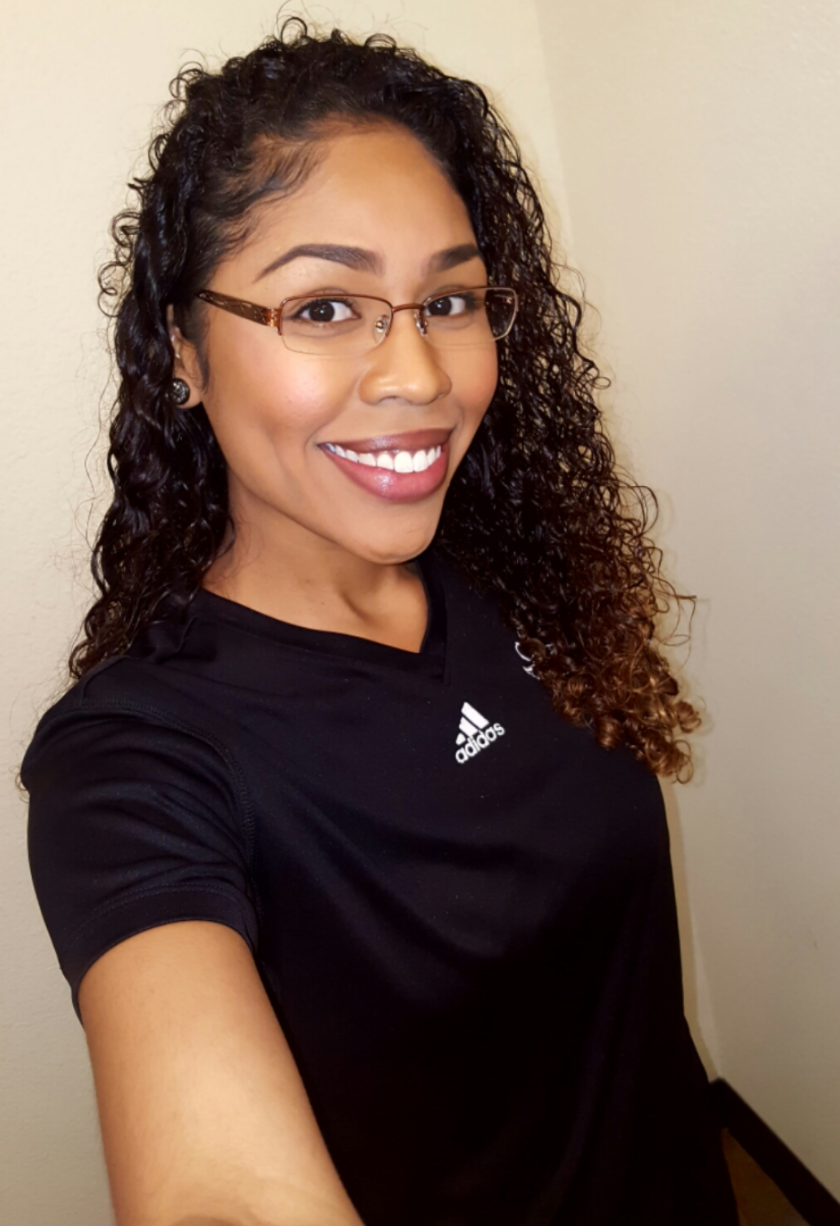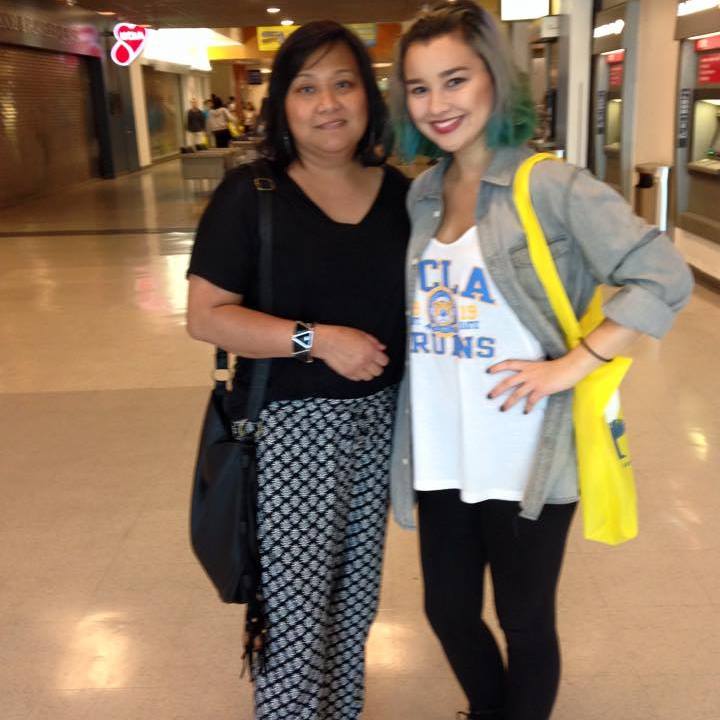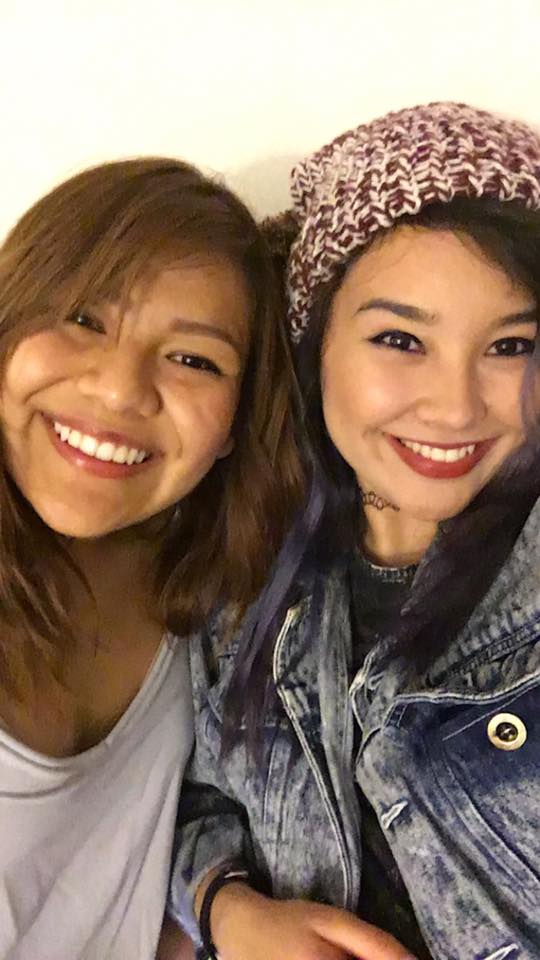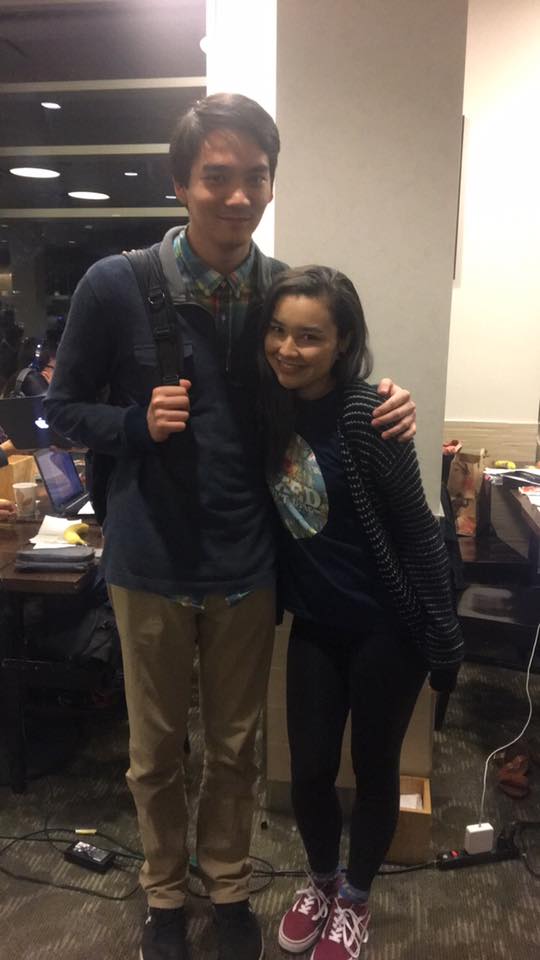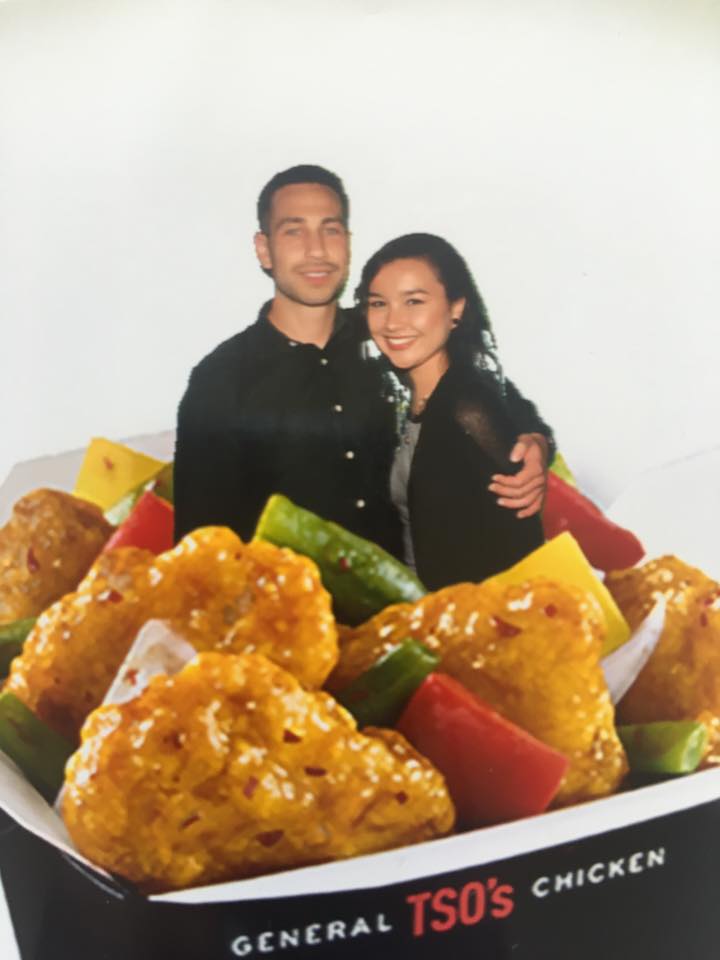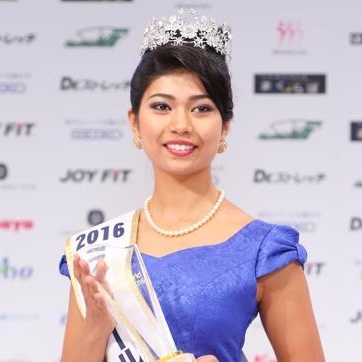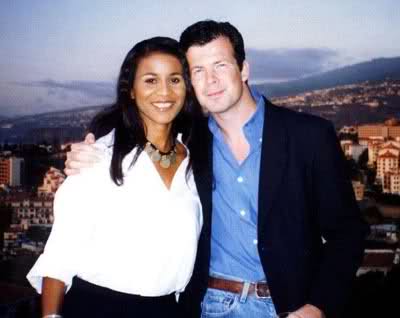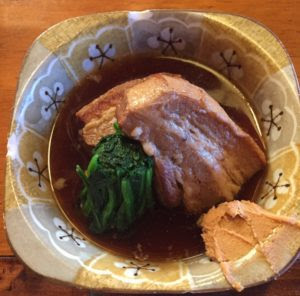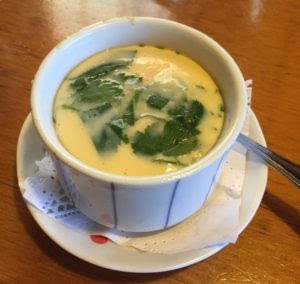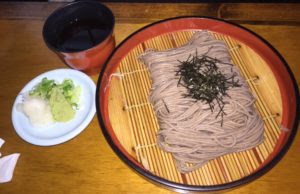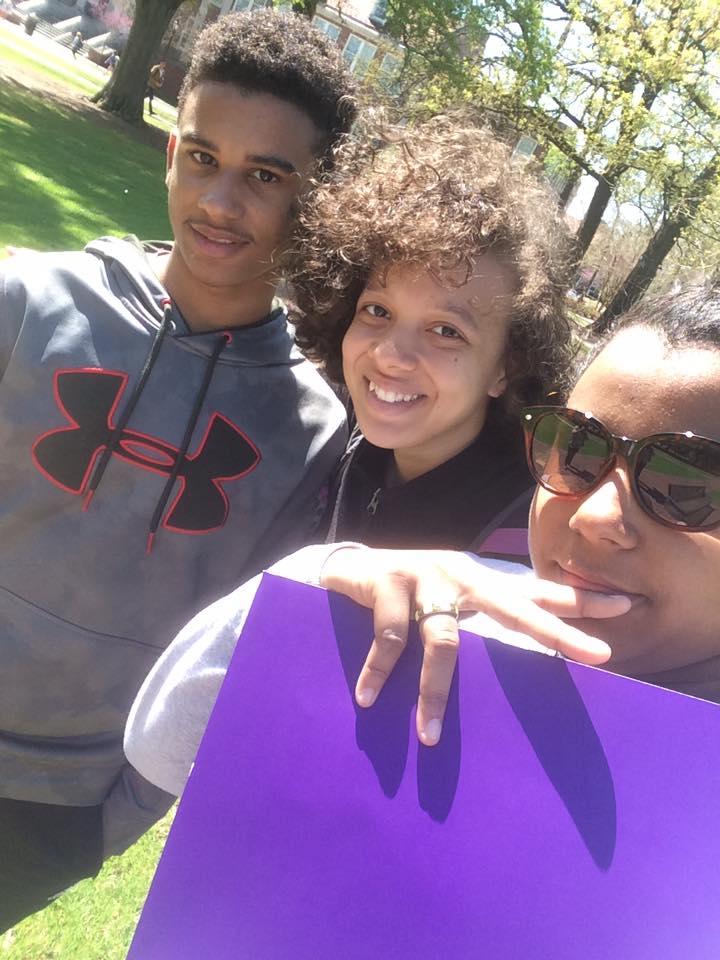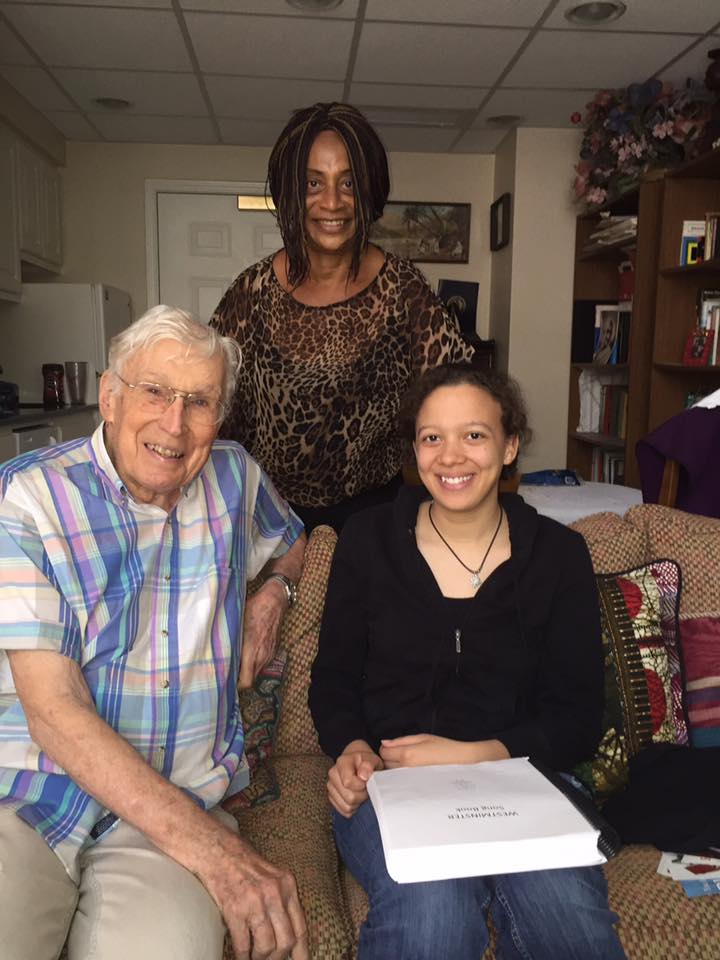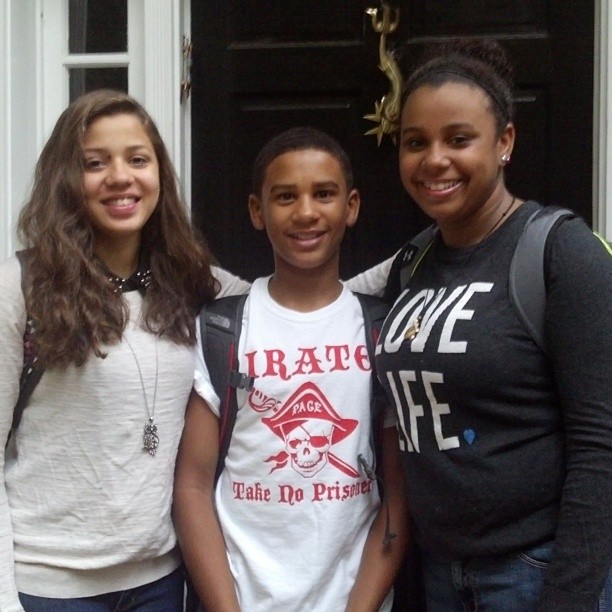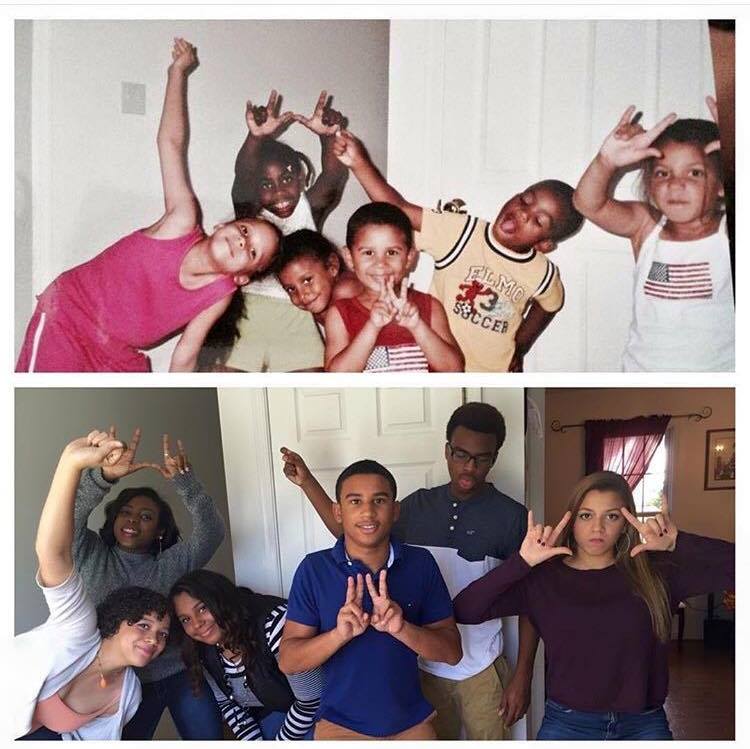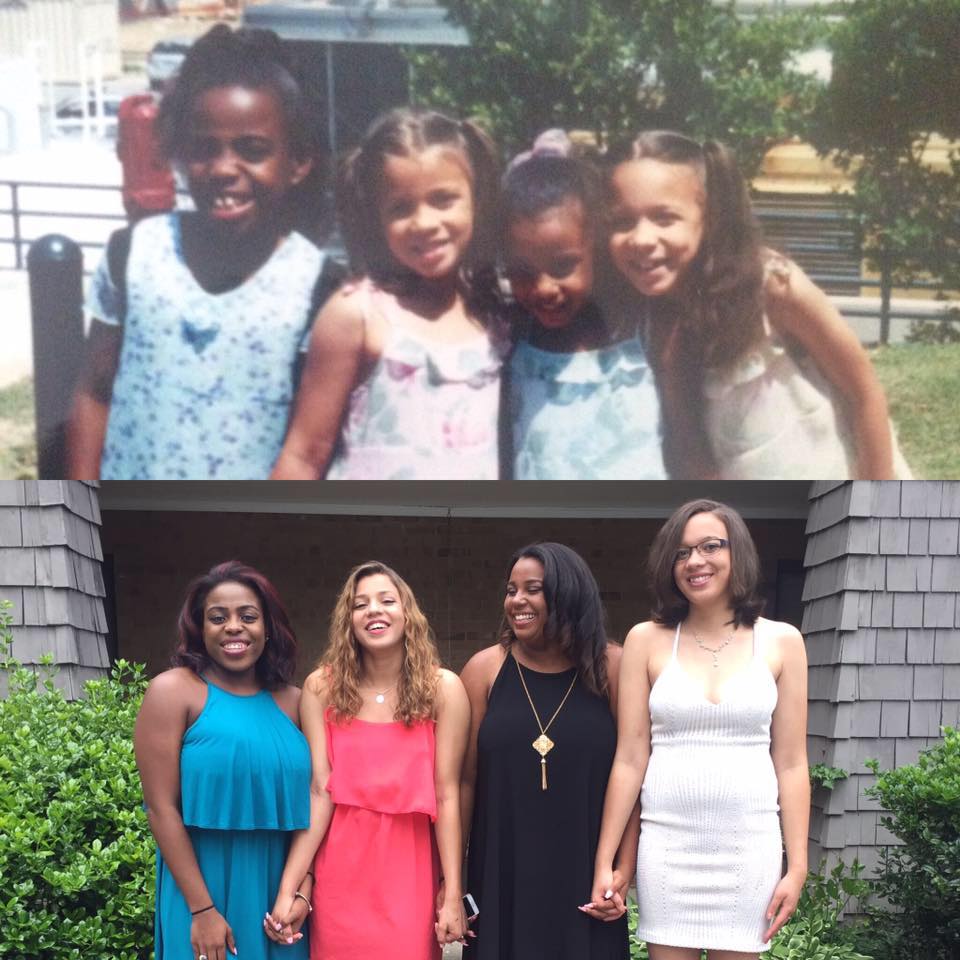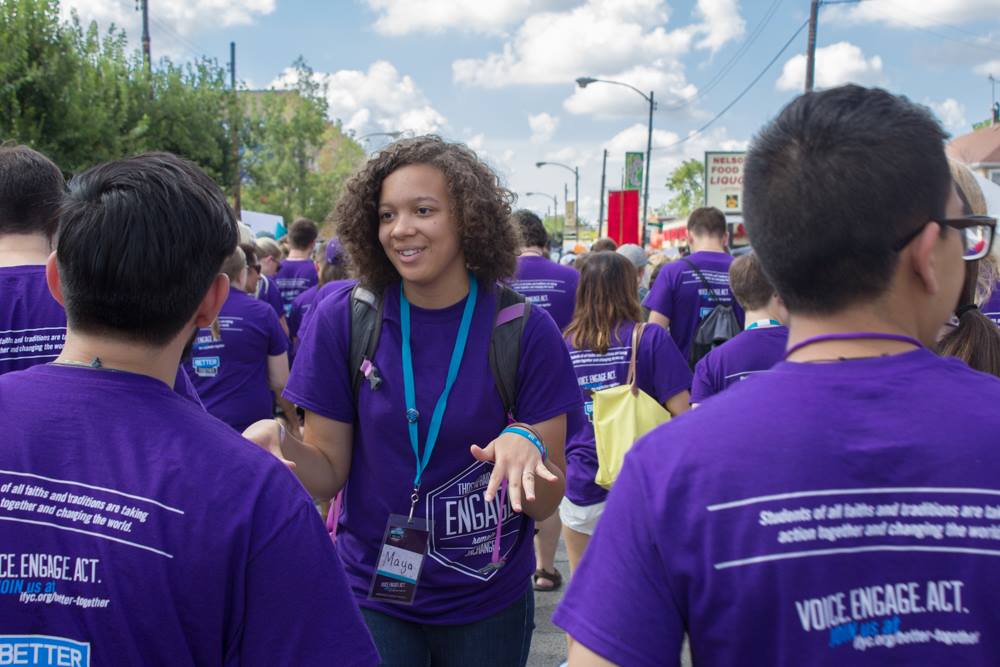Joanna Thompson, age 28
WHAT MIX ARE YOU?
My father is Black, from Washington D.C. His side of the family is mixed with European White and Native American, specifically Iroquois. My mother is Hispanic, from Nicaragua in Central America. Her side is also mixed with Native American, specifically Cherokee.
WHERE DO YOU CURRENTLY LIVE?
On the north side of Chicago, Illinois in a neighborhood called Lincoln Park.
IS THE COMMUNITY YOU LIVE IN NOW DIVERSE?
Unfortunately, not so much. It is predominately White. I have lived in this neighborhood for about 4 years and have recently noticed a growing Asian population. However, there are very little Blacks and Hispanics.
WHERE DID YOU GROW UP?
I was born in Alexandria, Virginia, which is a suburb located in Northern Virginia, right outside of Washington D.C. I lived in Virginia until I was in preschool, at which point my parents moved to Rockville, Maryland, where I was raised. Rockville is another suburb of the Metropolitan Washington D.C. area.
Rockville was a very diverse community. I always joke that I had the “United Nations of Friends” growing up because I knew people from different races, countries, and cultures. I only knew one other mixed kid who clearly identified as such; she is Black and Hispanic like me. Otherwise, I did not know any other mixed kids. However, despite not knowing other mixed kids, race was not much of an issue where I was raised. Not to say life was perfect, but I think because the area was so diverse and we all accepted each other’s differences, race was not really seen as an “issue.”
HOW DID YOUR PARENTS MEET?
My mom and dad met while working at a Marriott in Bethesda, Maryland. My mom, who had come to the United States from Nicaragua in the 70’s for better opportunities, moved to the northern Virginia area to finish high school and eventually get a good job. My dad was also hoping for the same, as he was preparing for community college and a career himself. In the early 80’s, my grandma (my dad’s mom) was working at said Marriott when she happened to hire my mom and dad around the same time. After meeting and chatting a few times at work, they began a courtship.
It’s kind of funny how they started talking because my mom actually lied about her age to my dad when they first started seeing each other. My parents are 10 years apart, with my mom being older than than my dad. At the time they were dating, my mom was 29 while my dad was 18. My mom told my dad she was around 23, but eventually came clean when she realized how much she liked him. Even with the large age gap, my dad had fallen for her too and they have been happily married for 34 years.
WERE THERE ANY SIGNIFICANT OBSTACLES IN THEIR RELATIONSHIP CORRELATED TO YOUR BACKGROUNDS?
Yes, race played a big role on both sides of the family for my mom and dad. On my dad’s side, there was criticism from older members of the family because he was dating/eventually chose to marry a “foreigner.” He was scolded for not marrying a Black woman and my mom was interrogated quite a bit by members of my dad’s family in order to understand just what her intentions for being with my dad were. The issue of age also played into this due to the large age gap between them.
On my mom’s side, there was always the notion the children of the family would marry someone who identifies as White. My mom is the second youngest of 13 brothers and sisters and many of her siblings who were dating/married before her were in relationships with White males/females. For her family, White = wealth. After growing up in poor conditions in Nicaragua, they believed in “The American Dream” and a part of that meant starting families with wealthy, White individuals. When my mom told her brothers and sisters she was in love with a Black man, she was immediately shunned from the family. To this day, communication with her siblings is rare because they never really respected her choice. The only person who did was her mother, who was loving of all people no matter who they were. Unfortunately, she passed away shortly after I was born.
HAS YOUR EXTENDED FAMILY ALWAYS BEEN SUPPORTIVE OF YOU BEING MULTIRACIAL?
My dad’s side has been much more supportive of my being mixed compared to my mother’s side. I think this is due to two main reasons. First, as previously mentioned, my dad’s extended family is mixed. My great grandmother on my dad’s side is White, of European descent, so many of my aunts and uncles are mixed Black/White. In addition, many family members have married other races; therefore, having the mixedness apparent on my dad’s side of the family is nothing new. Mixed-race is a part of the norm and it is very apparent given we have a gradient of skin colors on that side, from dark to light.
On my mom’s side; however, it is a different story. Even though my mom’s side believed in marrying outside of their race (i.e. marrying individuals who identify as White), the mix is not as apparent, and if anything, they seem to only appreciate a White/Hispanic mix. The fact that I am Black/Hispanic, to them, means I have been tainted, a child of the “One Drop Rule.” As previously mentioned, my mom does not have much contact with her family because she married a Black man. Even now at the age of 28, I have had minimal contact with her side of the family myself because they do not really recognize me as a part of their family due to my racial mix.
DID YOU CELEBRATE TRADITIONS FROM BOTH SIDES OF YOUR FAMILY?
Yes, I am fortunate to have had parents who raised me to be proud of both sides of my racial makeup. My dad never considered himself to be African-American, even though he knows his background definitely has roots in Africa, so I have never had any African cultural traditions like that from him or his side of the family. If anything, his culture, being from Washington D.C. consisted of social traditions that have been passed on. For example, he raised me to be a lover of sports. From football to hockey and everything in between, that is something we have always shared together as a family.
On my mom’s side, there are a bit more specific cultural traditions she has shared. My mom cooks delicious Spanish food, like Arroz con Pollo (chicken with rice) and handmade tortillas. Being in the kitchen with her, watching her cook, and trying to learn to do it myself have been a tradition in my household. One tradition both of my parents’ share is their love of music. Again, this may be considered more sociocultural than strictly cultural, but it is a part of the traditions my parents and I have come to share. I grew up listening to funk music from my dad and Juan Luis Guerra from my mom and being surrounded by their eclectic tastes in music helped me to learn more about my parents, where they are from, and what matters most to them. Plus, listening to Spanish music really helped me learn the language!
As I continue to think of family traditions, one tradition we actually created is putting up our Christmas tree on Thanksgiving Day. My mom is a devoted Catholic. My dad was not as religious before meeting my mom but has since become very strong with his sense of faith. The Christmas tree tradition is a mixture of my parents’ beliefs, helping to display their strong sense of family and God. Even the year or two I have not made it it home for Thanksgiving, due to school or work, I have always made sure to put up my Christmas tree on Thanksgiving Day, while watching the Macy’s Thanksgiving Day Parade, of course!
WERE THERE MULTIPLE LANGUAGES SPOKEN IN YOUR HOUSEHOLD?
Yes, my mom speaks Spanish fluently, so I would always hear Spanish throughout the house, and still do to this day. Even though my parents have been married for 34 years, my dad does not speak it, he just knows the basics and can comprehend some things! And unfortunately, I am not as fluent with my Spanish speaking either. I grew up speaking English in almost every facet of my life, so my Spanish is a bit shaky. However, I can understand it well and can read and write it fairly well. I am guilty of always responding to my mom in English whenever she would speak to me in Spanish, which probably did not help much! But again, being raised in a suburb where English was so dominant, I never really gave in to using my Spanish...and I still respond in English when my mom speaks to me in Spanish to this day!
WHAT DO YOU ENJOY MOST ABOUT YOUR CULTURAL BACKGROUND?
From my mom’s side, I definitely enjoy the food! And it is a love for Latin food in general, not just delicacies from Nicaragua. I am thankful that many common ingredients like carne asada or plantains are featured in dishes from many different Latin countries. I also highly appreciate Spanish music/pop culture. I grew up watching Telenovelas (soap operas) with my mom and as I previously mentioned, listening to Spanish music. These are things I still do today and appreciate very much. Spanish food and music are definitely two things that have helped me feel more connected to my Hispanic side. Although I am not as religious as my mom, I do appreciate what I have learned about God and religion from my mom’s strong Catholic background.
From my dad’s side, even though there are not many specific cultural things connected to his background, again, I definitely enjoy the more of sociocultural background he has. I am very close with my dad’s side of the family and I think it is because we all appreciate the time we spend together as a family. Despite ups and downs, which come with any family, we have always managed to be there for for each other when it comes to family functions, dinners, and outings. One of my older cousins on my dad’s side, DJ, is like a brother to me. I am thankful I am able to just hang out with my dad’s side of my family and maintain that cultural importance of family.
WHAT ACTIONS DID YOUR PARENTS TAKE TO TEACH YOU ABOUT YOUR DIFFERENT BACKGROUNDS?
Growing up, and even to this day, my parents never let me forget that I am mixed. And in doing so, both of my parents made sure that I would be proud to be both Black and Hispanic. They never wanted me to feel like I had to choose or feel like I am half and half, but rather a set of two whole races and cultures. My dad always said that because we live in America, I will always be seen as Black first, but that should never dim my Hispanic side. Even though I do not speak Spanish much, my parents always make sure I am using it at some point throughout my days so I would not lose it and not lose my pride in that part of my culture. And both of my parents have always told me stories/shown me pictures of their childhood experiences, being open and honest with me about where they come from so I could understand my roots.
DID YOU TALK ABOUT RACE A LOT IN YOUR HOUSEHOLD WHEN YOU WERE GROWING UP?
YES! Race was and always has been a topic of conversation in my household. On the one hand, my parents and I always get many a confused look when we travel together; people who are unsure what is going on between us and whether we are all really related or not. This always stems a conversation between us, which usually consists of a few laugh as we analyze what those confused looks may have have meant. In addition, as I have progressed through higher education, I am always talking to my parents about race and racism to bounce ideas off of them and to simply engage in some good conversation! On the other hand, for my extended family on my dad’s side, skin color and colorism have always been a heated topic. Despite racial mixing on my dad’s side of the family, there is a lot of tension between those who are dark and those who are light. There have been many comments made in regards to colorism in the family, along with its intersection with class and how certain family members are treated/treat others. Then again, being from the DC area, race and politics are always talked about, so I think my family just has it in their genes to get into discussions and debates about race!
DO YOU IDENTIFY AS MIXED OR SOMETHING ELSE?
I identify as mixed-race/mixed/multiracial. I do not necessarily consider myself biracial because even though I am predominantly Black/Hispanic, I do have Native American and White blood in me, so I feel more multi- than bi-, haha!
DOES RACE WEIGH INTO WHO YOU CHOOSE TO DATE?
Even though I have dated individuals of different races, race does play a minor role in who I choose to date. Sometimes, I feel like my eye is drawn to people of color or people who are visibly mixed. It’s as though I feel I will connect more with a person of color because they will understand the highs and lows of what it means to be a person of color in today’s world. Not to say a person who identifies as White will not, but sometimes I just feel like I will find it a bit easier to engage in those hard social conversations with a person of color. However, as someone who is currently on the dating market, I am definitely open to dating people of all races and racial mixes because in the end, connecting with a person takes into account more than just their race!
WHAT DOES BEING MIXED MEAN TO YOU?
Being mixed to me, as cliche as it may sounds, means that I have the best of multiple worlds. I have Black, Hispanic, White, and Native American blood flowing through my veins and that means a lot to me. I think it makes me a beautifully layered person. It gives me strength and confidence to know that I am literally, multidimensional and an intersection of society and history. I do not give into the “tragic mulatto” stereotype because I do not think being mixed is a tragedy, I think being mixed is great! Do not get me wrong, I have struggled with feeling like I will never be “Black enough” or “Hispanic enough,” but I think as I get older, I realize that I am indeed more than enough.
DO YOU HAVE A LOT OF FRIENDS WHO ARE MIXED?
I do not have a lot of childhood friends who are mixed, but fortunately, I am lucky to have made new mixed friends throughout my graduate school career, mostly from when I travel for conferences. I do not get to see these people everyday, but I am thankful to communicate with them about mixed-race issues. From them, I have learned different perspectives of the lived mixed-race experience because their mixes are different from mine. Therefore, their ups and downs based on their racial backgrounds have been interesting to compare and contrast with mine. In addition, having a network of mixed friends has given me an outlet to vent, and have them vent to me, about things that happen in pop culture regarding mixed-race or challenges of being mixed-race in academia, since many of my mixed-race friends are also in grad school as well.
ARE THERE ANY COMMENTS YOU ARE REALLY TIRED OF HEARING FROM PEOPLE IN REGARDS TO RACE/CULTURE?
One comment I have been tired of hearing recently is that “mixed-race people do not count.” From the speech Jesse Williams gave at the BET Awards a few months ago to San Francisco 49ers Quarterback Colin Kapernick protesting the National Anthem, mixed-race individuals have once again been put into a corner where they have to either choose a side or just be denied by both sides. Mixed-race people count, all sides of their racial mix, whatever that racial mix may be. Mixed-race people are not confused or unaware of who they are. It’s beyond time for people who are not mixed-race need to recognize that and accept it.
WHAT IS YOUR DREAM FOR THE FUTURE OF AMERICA IN REGARDS TO RACE?
I am a very optimistic person and I have a very utopian vision for the future of America in regards to race. I honestly hope that one day, the issue of race will no longer be an issue. I think one day we will all be racially mixed to some degree and at that point, we should not have to worry about racial differences and classifications because being mixed-race/multiracial will simply be the norm. And hopefully from this, racial violence will eventually decrease or cease to exist. Again, a very utopian dream, but I do hope it comes true someday!
ANYTHING ELSE YOU WANT TO SHARE?
I am a Ph.D. Candidate and instructor in the Department of Criminology, Law, and Justice at the University of Illinois at Chicago, where I teach an undergraduate course on criminal justice organizations. I received my MA from the Department of Criminology, Law, and Justice at UIC in 2012. Before coming to UIC, I received my BA in Criminology and Investigations with a minor in Professional Writing and Editing from West Virginia University in Morgantown, West Virginia. My research interests include further understanding the formation and perception of biracial identity theory and interracial relationships, focusing on critical mixed-race studies to emphasize the intersections between mixed-race identity and interpersonal victimization. My dissertation study examines bullying related victimization of mixed-race identified college students at the University of Illinois at Chicago.
You can learn even more about Joanna HERE, and also on social media: FB // IG // LINKEDIN // SNAPCHAT @jotothejo00



